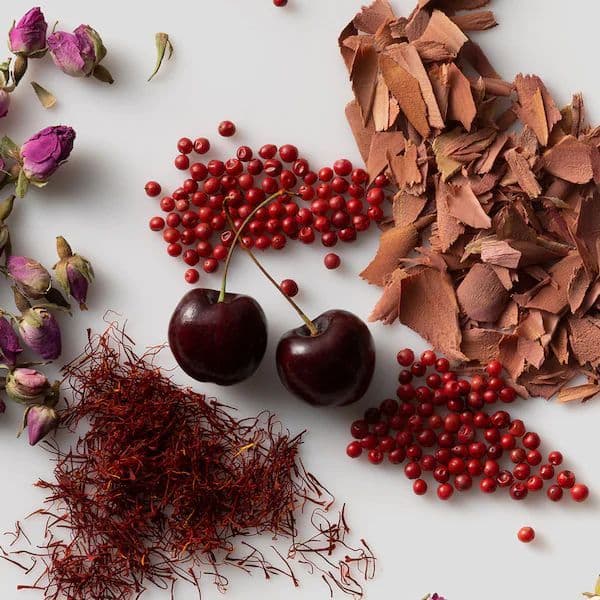In the world of perfumery, the art of crafting the perfect scent is a delicate balance of creativity and science. Central to this olfactory symphony are the fragrance ingredients, each with its unique story and origin. Let’s embark on a fragrant journey to discover where the best fragrance ingredients come from.
Exotic Flowers:
One of the most enchanting sources of fragrance ingredients is exotic flowers. From the lush fields of Grasse, France, where the iconic jasmine blossoms under the Mediterranean sun, to the mystical valleys of the Himalayas, home to the rare and precious blue poppy, these floral wonders provide the heart notes that define many classic perfumes.
Deep in the heart of the world’s forests lie the secret ingredients that form the base notes of many timeless fragrances. Sandalwood from India, with its warm and creamy aroma, and agarwood, also known as oud, sourced from the resinous heartwood of Aquilaria trees in Southeast Asia, add a touch of mystique and richness to perfumes.
Citrus Orchards:
The uplifting and zesty top notes in many fragrances owe their essence to citrus orchards. Whether it’s the sun-kissed oranges of Italy’s Amalfi Coast or the vibrant lemons from the hillsides of Sorrento, these fruits bring a burst of freshness and energy to countless fragrances.
Spice Markets:
Wander through the bustling spice markets of India, and you’ll encounter the aromatic treasures that spice up many fragrance compositions. Cardamom, cinnamon, and black pepper are just a few examples of spices that add warmth and depth to perfumes, creating a sensory journey that unfolds with each application.
Aquatic Wonders:
Some of the best fragrances draw inspiration from the depths of the ocean. Calone, a synthetic compound with a fresh marine scent, captures the essence of sea breezes and crashing waves. These aquatic elements infuse perfumes with a sense of coolness and serenity.
Ancient Resins:
Journey back in time to ancient civilizations, and you’ll discover resins that have transcended centuries to become integral fragrance ingredients. Frankincense from the Middle East and myrrh from Africa bring a sacred and ceremonial quality to perfumes, evoking a sense of history and tradition.
The world of fragrance is a tapestry woven with threads of nature, tradition, and innovation. From exotic flowers to mystical woods, citrus orchards to spice markets, each fragrance ingredient tells a unique story of its origin. As we explore these aromatic wonders, we gain a deeper appreciation for the craftsmanship that goes into creating the perfect scent—one that transcends time and leaves an indelible impression on our senses.
Musk & Natural Musk:
Derived traditionally from the musk gland of the musk deer, natural musk exudes a warm, animalic scent. However, due to ethical and environmental concerns, synthetic alternatives like Galaxolide and Muscone are now widely used.
White Musk:
A clean and light musk variety, often found in modern and unisex fragrances. It provides a subtle, skin-like warmth without the heaviness of traditional musk.
Musk Ambrette:
Extracted from the seeds of the hibiscus plant, musk ambrette offers a botanical alternative to animal-derived musk. It imparts a sweet, powdery aroma to perfumes.
2. Amber:
Ambergris:
A prized and rare ingredient, ambergris originates from the digestive secretions of sperm whales. Over time, it transforms into a sweet, earthy scent, adding depth and complexity to fragrances.
Amber Accord:
Composed of resins, benzoin, and vanilla, the amber accord is a blend that mimics the rich, warm notes of ambergris. It’s a versatile component that forms the base of many oriental and gourmand perfumes.
Labdanum:
Extracted from rockrose shrubs, labdanum contributes a resinous, leathery note to amber compositions. Its deep, balsamic aroma enhances the overall richness of a fragrance.
3. Woods:
Sandalwood:
Revered for its creamy and woody profile, sandalwood comes from the heartwood of Santalum trees. It’s a timeless ingredient in perfumery, often used as a base note to add warmth and sophistication.
Cedarwood:
Distilled from cedar trees, cedarwood offers a dry and aromatic scent. It is a popular choice for fragrances seeking a woody, masculine character.
Oud (Agarwood):
Derived from infected agarwood trees, oud is a complex and luxurious scent with resinous, balsamic, and smoky facets. Originating from the Middle East and Southeast Asia, oud is a prized and sought-after ingredient.
4. Citrus:
Bergamot:
Extracted from the rind of bergamot oranges, this citrus note is fresh, bright, and slightly spicy. It is a key element in many classic colognes.
Neroli:
Distilled from the blossoms of bitter orange trees, neroli imparts a sweet and floral citrus scent. Its lightness makes it a popular choice for daytime and summer fragrances.
Petitgrain:
Obtained from the leaves and twigs of citrus trees, petitgrain offers a green and slightly woody citrus aroma. It adds a crisp, refreshing quality to fragrances.
5. Flowers:
Jasmine:
Known as the “queen of flowers,” jasmine emits a sweet, exotic, and heady fragrance. Its inclusion in perfumes symbolizes luxury and sensuality.
Rose:
The timeless scent of roses is both classic and romantic. Rose absolutes and extracts contribute a rich, floral note to a wide range of perfumes.
Tuberose:
A white flower with an intense and narcotic aroma, tuberose is often used to add depth and sensuality to floral compositions.
6. Spices:
Cardamom:
This warm and aromatic spice adds a touch of sweetness and complexity to fragrances. Cardamom is often used in oriental and spicy compositions.
Cinnamon:
Extracted from the bark of cinnamon trees, cinnamon provides a spicy and slightly sweet note. It’s a versatile spice that adds warmth to both men’s and women’s fragrances.
Black Pepper:
With its invigorating and peppery kick, black pepper is a unique spice used to add a dynamic and lively element to perfumes.
In the intricate world of perfumery, the selection and combination of these ingredients create olfactory masterpieces that evoke emotions, memories, and a sense of luxury. The artistry lies in the perfumer’s ability to balance and harmonize these diverse elements, crafting scents that resonate with individuals on a deeply personal level. As you explore the world of fragrances, take a moment to appreciate the craftsmanship and creativity that goes into each bottle, embodying the essence of art and science in perfect harmony.





